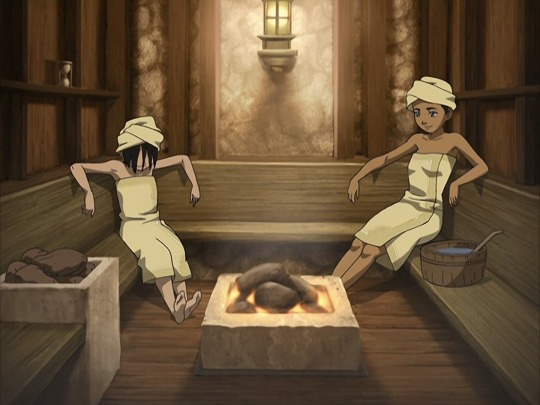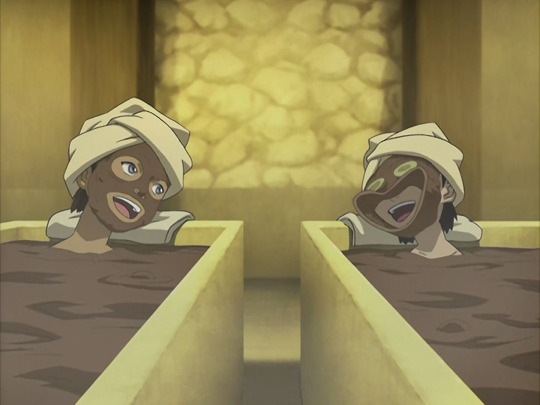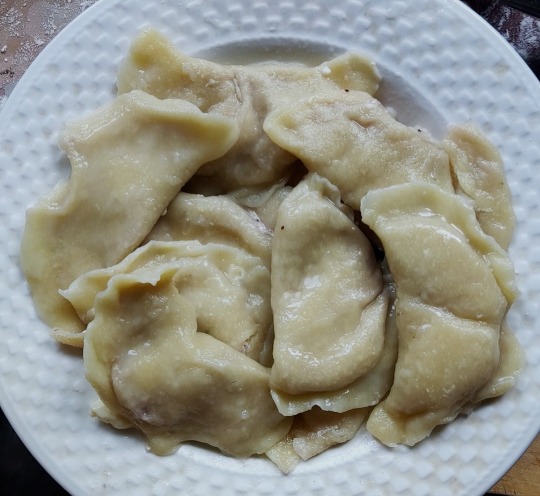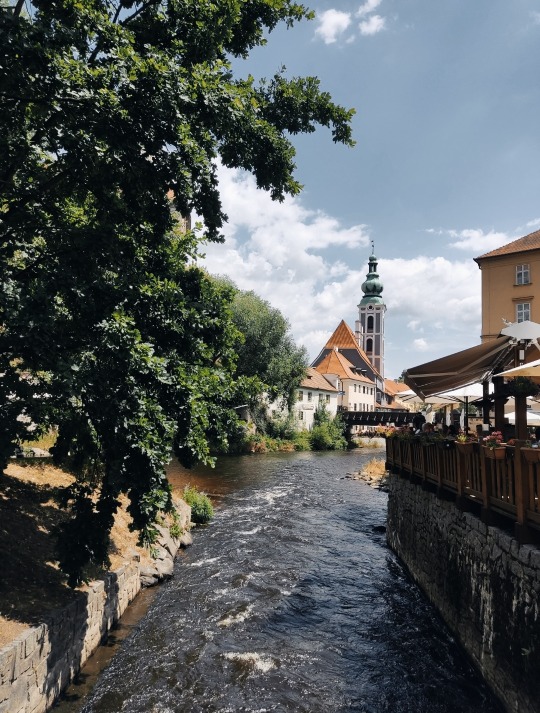#CulturalExplorers
Explore tagged Tumblr posts
Text
The Best Airlines for Cultural Explorers
Book cheap flight tickets and hotels- https://trailtravelz.com/
Traveling the world offers more than just sightseeing; it's an opportunity to immerse oneself in diverse cultures. Choosing the right airline can enhance this experience, offering cultural insights even before you reach your destination. Here's a guide to some of the best airlines for cultural explorers:
1. Qatar Airways Renowned for its luxurious service and Middle-Eastern hospitality, Qatar Airways provides an immersive experience from the moment you step onboard. Enjoy traditional Arabic cuisine, elegant interiors inspired by Qatari art, and exceptional service that reflects the richness of Arabian culture.
2. Japan Airlines (JAL) For those exploring Japan's rich cultural heritage, Japan Airlines stands out with its impeccable service and attention to detail. Experience the warmth of Japanese hospitality (omotenashi), enjoy authentic Japanese meals, and perhaps catch a glimpse of traditional attire worn by the crew.
3. Air France Known for its sophisticated French charm, Air France offers a taste of French culture right from takeoff. Indulge in gourmet French cuisine, elegant cabin décor inspired by Parisian design, and exemplary service that reflects France's reputation for hospitality and style.
4. Turkish Airlines Connecting East and West, Turkish Airlines provides a cultural mosaic onboard. Experience Turkish hospitality (misafirperverlik), savor delicious Turkish cuisine, and admire the artistic touches of Turkish design that adorn the aircraft, offering a glimpse into Turkey's rich heritage.
5. Singapore Airlines As a cultural melting pot itself, Singapore Airlines mirrors the diversity of its home country. Enjoy a fusion of Asian cuisines, experience the grace of Singaporean service, and relax in cabins designed with Asian aesthetics, providing a journey that celebrates cultural diversity.
Choosing the right airline can significantly enhance your cultural exploration journey, offering insights into traditions, cuisine, and hospitality even before you land. Whether you're flying to Asia, Europe, or the Middle East, these airlines excel in providing an enriching cultural experience from start to finish.
0 notes
Text
Warding your eyes

This post is for my folks who currently use glasses, contacts, or other visual aid's!
What is Warding with your eyes?
This is a concept similar to taking on a witches name, however it has to do with your visual aids! They say that eye's are the windows to the soul, but what about people or entities or energies that are looking to disrupt our peace? Well this is a great ward to follow as a personal ward
I recently had this revelation when my glasses shattered in the sea after I slipped under the riptide and as I was grabbing my glasses under the water, a shell came and smashed them (I am ok, I am trained to handle that and am a strong swimmer). I ended up going to one of those minute labs to get new frames and lenses, but I realized something.
If eyes are a part of you that exposes a lot about your being, whether you believe in iridology, window theory, etc then why wouldn't you ward a possible weakness? Witches names are a name a witch takes on to act like a deflector, if someone hexes them using the wrong name then it doesn't touch down, so the idea of this spell is If someone attempts to harm you spiritually, you are now wearing 'different eye's' and can reflect the spell. All it takes is a bit of enchantment. We will be banking on the fact that glasses somewhat obstruct the eye (when you look at someone's eyes through glasses they can appear different, bigger, or smaller) but you can see them clearly.
The Spell
This spell is best done on a new moon, high tide, or on a Wednesday! all of these have correspondences of protection, deflection, etc. ingredients: - Glasses/eye aid - Cleaning solution - Cleaning cloth (If being done with contacts or other eye aids, adapt this to be the aids, whatever you use to clean them with, and IF NEEDED a drying apparatus) The Steps: 1. Set up your space how you choose to do so, set your aid down in front of you. Meditate over or reflect on what the glasses mean to you 2. Envision or create a chant that reflects the eye-dea (haha) of people/spirits/energies with bad intentions not being able to effect you, because they cant see the right person to harm because of the visual aid 3. Take your finger and stamp a sigil of warding either on the lens, contact case, or safe spot on the aid 4. Clean it off to 'rub it into' the device 5. Finish the spell how you choose to finish, and transition out of the ritual space I hope you all enjoyed! More content coming soon!
Tip Jar
#pagan witch#witchblr#witch#magical theory#grimoire#witchcraft#spells#magick#baby witch#warding#protection#glasses#water witch#witch community#witchcore#culturalexploration#magic#spirtuality#spiritual journey#spiritual protection
531 notes
·
View notes
Text
Katara the selfcare queen
Every canon instance or mention (that i can rmr) of Katara indulging in selfcare in the middle of a war because I find it quite amusing yet fascinating.
I may or may not have made a post like this before but I wanted to expand on it.
1. Skincare routine

In 1x14, The Fortuneteller, Katara reveals she has a special seaweed lotion that she carries with her for soft skin. (Avatar Extras also made a point of saying that it smells…?) She even offers to get Aunt Wu some, as if she has extra. So my question is, who is this plug that she gets her steady supply of seaweed lotion from? 😭
Real-life: Seaweed has been used in skincare for thousands of years, first recorded in ancient Chile. Nowadays, seaweed extract is pretty common in skincare products especially from emerging brands in Nunavik and Iqaluit, Canada.
My headcanon: This is probably a recipe Katara picked up from the older women of her tribe, so she just plucks some seaweed whenever the gaang stops by a body of water. And she definitely makes it in cute glass jars and shares it with her fellow healers in the Republic City Hospital ✨selfcare queen✨
2. Spa Day



I just find this funny because when and how did she even find this spa? How long has she been going by herself? Look how comfortable she is like dhjfjcd she’s definitely a regular and they all know her.
Real-life: Saunas are pretty modern, starting up in Finland around 1112. (In canon, I think a firebender and a waterbender run a sauna in Republic City so hey.) Mudbaths on the other hand have been around for centuries and people have been doing it at any naturally occurring hot spring they can found. I don’t even have to tell you about massages so
My headcanon: Katara always knows where the spas and selfcare places are wherever they go. I definitely think she scooped up some stuff at the perfume abbey in season 1 (because she’s a kleptomaniac). I also headcanon she would have a spa setup in the back of Republic City Hospital because selfcare is healthcare too. Also, Aang gives her massages at home and he’s surprisingly good at it, but, Katara sucks at massages and Aang never lets her do it to him after that one time 💀
3. Yoga


In 3x11, Nightmares & Daydreams, Katara teaches Aang yoga to de-stress in a hot spring. My thing is, when did she learn about yoga and how often does she do it? We needed the Katara yoga mini shorts special. The kids would’ve loved it.
Real life: Yoga originating from ancient India is practised in a variety of forms in Hinduism, Jainism and Buddhism. The poses they do are the Upward Salute and the Wide Legged Forward Bend.
My headcanon: I imagine Katara must have read about this at the Air Nomad Section of the Spirit Library, given the cultural heritage. Knowing her she found a yoga scroll and swiped it (can you say klepto?). This is another selfcare thing she does with Aang because it’s his culture! They do it every Saturday until he starts complaining about his old bones 😅
4. Hair care




Katara also wears a special cap on her head when doing yoga which I assume is to protect her hair from the steam 🤔 I just found it very interesting since we hardly see her hair covered. Then I also realized Katara is the only character shown actually combing her hair and styling it like 4 times: from the bun-braid, to the formal earth kingdom look, to her fire nation look and finally the bun with her hair out.
Real life: I typed so many things and I finally found something similar called a chinoiserie satin skull cap? (sorry pic limit). It’s similar in design and even has a tassel like Katara’s. Focusing on her hairstyles, the signature “hair loopies” are actually based on a traditional Inuit style known as qilliqti and her earth kingdom look is based on a traditional Manchurian style called liangbatou.
My headcanon: Like Katara’s mysterious seaweed lotion recipe, she probably makes several haircare products for herself, and has a major hair routine. So, it would make sense she wears protective caps from time to time. I also think both Hama and Katara are tied to the myth of Senna, the Inuit sea goddess, through the comb Katara uses which I headcanon is the identical comb Hama had in her home (again klepto).
If there’s any more selfcare moments I left out, please feel free to share or reply with your own Katara ✨selfcare queen✨ headcanons!
#atla#katara#self care#self care queen#skincare#spa#yoga#haircare#culturalexploration#my headcanons#kataang#anti zutara
236 notes
·
View notes
Text
god I love to meet people with different cultural backgrounds so much and it feels so good to explore their cultures and customs which makes me wanting to learn a language they speak so bad especially as a someone who is in love with language learning
#culturalexploration#culture#different cultures#foreign languages#langblr#langblog#language learning#english language#language#languages#latin language#aspiring polyglot#polyglot#lingblr#linguistics
142 notes
·
View notes
Text
Karlach is one of the few characters I would make a straight character for.
Minthara(Mimfara, I so lovingly call her in an awful British accent) is a close second.
Idk what that says about me as a person.
#bg3#karlach#too gay for this#mlm#the only exception#bicuriosity#minthara#closet#gay#astarion#astarion simp#straight men#culturalexploration#mlw#tiefling#barbarian#infernal engine#bg3 avernus#beautiful#beautiful women#strength#power#strong
22 notes
·
View notes
Text
Crafting Authentic Slavic Characters: A Guide to Avoid Stereotypes and Embrace Diversity
A/N: I've been informed that people who have nothing on their blog can be mistaken for bots, so I decided to make one about something I'm really passionate about, as a Montenegrin woman. So sit back and enjoy :) (Keep in mind that I've never written a blog before, not even in my native language, so excuse any mistakes.)
Dear writers and storytellers,
As we dive into the art of character creation, it's essential to recognize the significance of crafting Slavic characters authentically and respectfully. Our stories have the power to challenge stereotypes and foster cultural understanding. This guide aims to provide a balanced perspective on what to do and what not to do when developing Slavic characters.
1. Do Research Thoroughly: Invest time in researching Slavic cultures, languages, history, and traditions. The more you know, the better you can authentically represent Slavic characters.
2. Don't Rely on Stereotypes: Avoid portraying Slavic characters solely through stereotypes like the "Russian villain" or "stoic Eastern European." Break away from these clichés.
3. Do Embrace Diversity: Recognize the diversity within the Slavic region. Slavic culture varies greatly from one country to another, so consider this when creating characters.
4. Don't Use Accents as a Crutch: Avoid heavy phonetic accents in dialogue, as they can come across as caricatures. Instead, convey their origin through subtle language choices.
5. Do Develop Complex Personalities: Slavic characters, like any others, should have multi-dimensional personalities, aspirations, and flaws. Make them relatable.
6. Don't Overdo "Tragic Backstories": While adversity can make a character compelling, avoid making every Slavic character's life a never-ending tragedy.
7. Do Consult Sensitively: If you're not from a Slavic background, consider seeking input from individuals who are. Be respectful and willing to learn.
8. Don't Fetishize Culture: Avoid reducing Slavic culture to exotic or mystical elements. Portray it respectfully, not as a novelty.
9. Do Challenge Prejudices: Use your writing to challenge stereotypes and prejudices, both within your story and in your readers' minds.
10. Don't Make All Slavic Characters the Same: Not every Slavic character should conform to a specific mold. Showcase their individuality.
11. Do Address Historical Context: If your story involves historical events or themes, handle them with sensitivity and accuracy.
12. Don't Neglect Positive Representations: While conflict can be a central theme, don't forget to include positive Slavic characters who contribute to the narrative in meaningful ways.
13. Do Avoid Cultural Appropriation: Use cultural elements respectfully and with proper context, avoiding appropriation or misrepresentation.
14. Don't Make Language Mistakes: If using Slavic languages in your writing, ensure they are used correctly to avoid unintended errors or offense.
15. Do Humanize Your Characters: At the core of it all, Slavic characters are human beings. Treat them with the same care, depth, and humanity you would any other character.
16. Don't Be Complacent: Writing authentic Slavic characters is an ongoing process. Continuously educate yourself and be open to feedback.
In conclusion, dear writers, crafting Slavic characters that break free from stereotypes and embrace diversity is not just a creative endeavor but a moral one. As storytellers, we have the power to shape perceptions and promote cultural understanding. By following these guidelines and committing to respectful and nuanced representation, we can contribute to a more inclusive and vibrant literary landscape.
Let's embark on this journey together, armed with knowledge and empathy, and create characters that truly reflect the rich tapestry of the Slavic experience.
You're also free to ask *me* any questions, if you have them and would like an answer from someone who's actually Slavic.
With sincerity and resolve,
Nyushka, a certified Slavic person :)
#writeblr#writerscommunity#ao3 writer#writer things#writblr#writerslife#representation matters#culture#slavic#slavic culture#slavic representation#inclusion#inclusivity#representation#representation in media#representation in literature#culturalexploration#culturalheritage#cultural differences#cultural diversity#diversity#diversity in media
31 notes
·
View notes
Text
Brezilyalı olduğum için Türkiye'nin gelenek ve göreneklerini bilmiyorum. Bana yardım edebilecek herkes minnettar olacaktır

17 notes
·
View notes
Text
Polish Versus Ukrainian Cuisine, Part 1
I have to confess, I have a little sin on my consciousness, namely, I visit Instagram sometimes. In most cases I do that just to catch up with my friends and family, but, you know, as most of young people of my age I just end up scrolling a tiny bit (usually, right until the moment I feel the urge to vomit, as I genuinely hate this place).
Recently, I came across a very cozy video where a Korean home cook mixes a Polish Pierogi Ruskie recipe with some Korean toppings. The thing that confused me the most, though, was the most liked comment under this video left by a Ukrainian woman who claimed that Pierogi Ruskie is a Ukrainian dish and is, in fact, called Varenyky. It's easy to assume that this person has never made a single dumpling, varenyk or pieróg in her entire life, as she kept on claiming that Pierogi Ruskie can have a lot of different fillings and that Polish Pierogi don't have such a big choice of fillings as Ukrainian Varenyky do, so, clearly, this person had zero idea what Pierogi Ruskie actually are, but that's not the point.
This comment made me wonder how different are the two cuisines of those Eastern and Central European countries. Having lived for a long time in both countries, I thought it would be interesting to study this topic a little bit, namely from the perspective of the difference between the staple dishes in two cuisines. After all, we actually are what we eat, especially on the global scale. Everyone knows Italy for their brilliant pizza and pasta, and everyone knows Japan for sushi and tempura, and even though food is not the only aspect of those cultures that made them famous around the world, it definitely adds up to create a full picture of their collective cultural identity.
So, in this post I'd like to share some personal observations that I made throughout my life about Polish and Ukrainian cuisine having lived significant portions of life in both countries, being ethnically related to both and being wholeheartedly fascinated by food.
Disclaimer!!! I'm not a food scientist or chef, nor am I a professional historian. All the notes down here are mostly based on my personal observations and some basic research. I did consult a professional cook and a baker whom I know personally as they happen to be my family members. I do recommend treating everything I share here with a grain of salt (hehe, because we gonna talk 'bout cookin', hehe, so use salt) and bear in mind that different cooks have different approaches to their recipes and your personal experience with Ukrainian and Polish food might differ from mine. That being said, I encourage you to share these experiences whether you are Ukrainian, Polish or anyone else, really. I do not accept such arguments as "Ruskie because Kyiv Rus!", though, as it's not about arguing in the first place, it's about diving into the heritage of those two countries and talking about the food.
Pierogi vs. Вареники


Let's start with them culprits. I think those two dishes are the most confusing ones because of their similarity. Gosh, both of them are dumplings from Europe shaped like a growing moon, aren't they?
The dough for both dishes varies from region to region, from cook to cook. In my experience, both recipes need three basic ingredients:
- liquid
- salt
- flour
The rest depends, really. You can change the four, you can change the liquid, replacing water with milk or kefir, you can add an egg. I personally go with my mother's recipe which is boiling hot water, egg, AP flour and salt.
Two of the striking differences are their size and shape. It seems like Ukrainian dumplings are usually smaller, flatter and quite translucent in comparison to Polish ones, which are big, sometimes even huge (check Pierogi Po Bieszczadzku, they are bigger than my fists, I kid you not), they have a very full body and the dough itself is thicker (the reason is not so much ingredients in the dough as is the method of forming/cutting the circles out of it). They also have a lot of different really funny regional names which very often also refer to the size, shape, filling or method of preparation, for instance, Dzyndzałki (Warmian small dumplings served in soup), Bulwanki (Eastern Polish holiday pierogi with variety of savoury fillings), Sasznie (A type of dumplings from Eastern Borderlands that use potato in the dough) or Sójki (Masovian baked pierogi made with yeast).
The fillings of both Pierogi and Varenyky basically might create their own multiverse. In both Poland and Ukraine, I found so many different combinations of fillings that it would be a waste of time to write about each one of them. However, Pierogi most often have savoury fillings (from meat through cheese and potatoes though different types of groats and the list goes on and on..), while Varenyky have a bigger variety of sweet fillings, including the classic cherry filling. Also, Ukrainians seem to be not very much into the meat filling. In my childhood, I had never eaten meat dumplings in Ukraine, however, at the time, pelmeni were quite a popular alternative. Ah, classic Soviet influence - replace your own with something russian )yuck.
As for the toppings, depending on what kind of filling you are dealing with, there are many alternatives for both dishes, including chives, fried bacon, sour cream, melted butter, caramel sauce (haven't seen this one in Ukraine, but noticed it being popular in Poland with sweet cottage cheese Pierogi) and many others. Both dishes are absolutely marvelous even without any additions.
Now, if anyone says that Pierogi Ruskie are called that way because they are Ukrainian, they are not entirely wrong. This type of pierogi was invented in Eastern Galicia (a geographical region in Western Ukraine which was also used to refer to the Eastern part of Poland; The name derives from its Polish name of territory - "Ruś Czerwona" ("Ruthenia Rubra" in Latin)), however there's a high chance it happened when it was the part of Austrian Empire, when majority of population in this region, especially in big cities including Lviv, were Polish. Either way, this dish is much more popular in modern Poland and has lots of different regional variations that you can meet across the whole country (see the Bryndzylki designed by Polish Highlanders), while it's basically non-existent in Ukraine and in the country they are often called "польські пироги" (literally "Polish Pierogi"). Pierogi Ruskie are prepared with cheese, onion and potato filling, while in Ukraine you are more likely to come across some Varenyky with potato, onion and bacon filling.
Thank you very much for your attention, share your dumpling preferences and experiences in the comments or in the reblogs, share your recipes, go crazy, and let's discuss the food!!
My pierogi variation with cottage cheese and strawberry jam filling (not the most attractively shaped one, but very tasty - my significant other approved them):

#poland#ukraine#pierogi#varenyky#polish cuisine#ukrainian cuisine#polish culture#ukrainian culture#dumplings#cultural differences#culturalheritage#culturalexploration#polska#polska tradycja#polish tumblr
13 notes
·
View notes
Text




i wish i could say that the river of my arms have found the ocean
#uiscefhuaraithe#vltava#czechia#cesky krumlov#beautiful world#clouds#i love water#boats#dark academia#aesthetically beautiful#historic#culturalexploration#medieval town#water sports#frui vita#terrace#picturesque#kafkaesquesoif
8 notes
·
View notes
Text
It's only logical that pre-fall beliefs, customs and ideas still survive in 5016U, but warped beyond recognition.
Concept: In underground structures, tunnel networks and mines, it is traditional to place near the vents small statues of a mustachioed gnome laying down: these are effigies of the Sadon Huzin, benevolent underground spirits that bring good luck to those who leave them offers of treats and keep away kobolds.
For the latter reason, Karrakin soldiers fighting the Ungratefuls sometime wear similar effigies on their person. So far they don't seem to have a statistically significant ability to hinder Kobold frames; probably because those are actual mecha and not mischievous gremlins
11 notes
·
View notes
Text
It's Saturday which means...NEW EPISODE: Episode 11: It’s one of the most famous photos ever: the girl on the National Geographic cover with the bright green eyes. But not many know how angry she was in the photo or why she was so angry. After all, the photographer broke some cultural norms to get this important shot.
But this expose is more about the search for The Afghan Girl and how it took 18 years to find her. Sophisticated iris scans, weeding out false claims and the people claiming to be her, visiting various countries…it was an exhaustive search. But they did it. Here’s how they found her and what became of the famous Afghan Girl from that National Geographic cover.
This is the eleventh episode in a series of episodes that’ll drop every Saturday throughout 2024.
youtube
Share it with others if you enjoy it. Head over to my YouTube channel to watch (link in bio and description). Also linked in my stories.
#TheAfghanGirl #SteveMcCurry #CulturalPhotography #IrisPatternIdentification #PhotographyEthics #IdentityDiscovery #DocumentaryPhotography #PhotographySearch #CulturalExploration #Photojournalism #MustWatch #mccurry #photography #exhibition #mostra #art #nature #portrait #exhibitions #mountain #contemporaryart #museumlife #museomuse #musetrento #sciencemuseum #photo #science #naturallycurious #fotografia #arte #photographer #nationalgeographic #tcmacdesigns #travelphotography #afghangirl #india #streetphotography #museum #bari #stevemccurryofficial #asmr #athousandwords
#TheAfghanGirl#SteveMcCurry#CulturalPhotography#IrisPatternIdentification#PhotographyEthics#IdentityDiscovery#DocumentaryPhotography#PhotographySearch#CulturalExploration#Photojournalism#MustWatch#mccurry#photography#exhibition#mostra#art#nature#portrait#exhibitions#mountain#contemporaryart#museumlife#museomuse#musetrento#sciencemuseum#photo#science#naturallycurious#fotografia#arte
2 notes
·
View notes
Text
Living in the Shoes of Another Cultural

#cultural#culturalexploration#diversity#explore#jewish#Temple Isreal#synagogue#Jewish community#homeless#Free Community Meals#Food Shelf#Free Public Meals#no discrimination#living in their shoes
2 notes
·
View notes
Text
Autumnal Equinox Altar

Just wanted to show off my altar for the season! Fall is one of my favorite seasons if you couldn't tell haha!
What's on your Autumnal Altar? What holidays do you like to celebrate? What deities do you like to devote this time too? I wanna know :3
#witchblr#pagan witch#witch#magical theory#witchcraft#spells#magick#culturalexploration#baby witch#witchcore#altars#paganblr#paganism#mabon#autumnal equinox#wheel of the year#fall#pagan#autumn#spooky season#holidays#season#seasonal#spiritual#spirtuality#spiritual journey#spirituality#i love fall please and thank you
86 notes
·
View notes
Text
Unlocking Success: Navigating Diverse Business Services in the UAE
At Transcend Accounting, our dedication lies in empowering businesses with a comprehensive suite of services tailored to meet the Diverse Businesses needs of investors seeking success in global markets, including the dynamic landscape of the UAE. Our array of offerings covers every aspect of business establishment and growth, ensuring a seamless journey for our esteemed clients.
We Guide to Company Formation in the UAE: Embark on a journey through the intricacies of setting up a business in the UAE with our expert insights into legal requirements, documentation processes, and key considerations for entrepreneurs.
Visa Procedures Demystified: Navigate the various visa procedures required for business setup in the UAE with ease, as we provide invaluable tips and advice on streamlining the application process for a smooth entry into the UAE market.
Mastering the Art of Opening a Bank Account in the UAE: Dive into the nuances of opening a bank account in the UAE with Transcend Accounting, where we highlight different options available, key documentation requirements, and tips for selecting the right banking partner for your business.
Streamlining HR and Payroll: Our Best Practices for Businesses in the UAE: Our article offers actionable tips and best practices for managing HR and payroll processes in the UAE, ensuring compliance with local regulations and fostering employee satisfaction and productivity.
Navigating the Maze of VAT and Accounting Services in the UAE: Shed light on VAT compliance and accounting services in the UAE with Transcend Accounting's expert guidance, providing practical advice on regulatory changes, tax strategies, and financial transparency.
The Future of Business Services in the UAE: Trends to Watch by Transcend Accounting: Explore emerging trends in business services in the UAE with Transcend Accounting, offering insights into digital transformation and sustainability initiatives that enable businesses to adapt and thrive.
Success Stories: How Businesses Are Thriving with Transcend Accounting's Diverse Services in the UAE: Discover inspiring success stories of businesses leveraging Transcend Accounting's diverse services to achieve growth and success, providing valuable lessons and inspiration for your entrepreneurial journey.
Unlocking Opportunities: Exploring Niche Business Services in the UAE: Delve into niche business services available in the UAE with Transcend Accounting, highlighting opportunities for entrepreneurs to drive innovation and carve out a unique market position.
The Power of Partnership: Collaborating for Success in the UAE Business Ecosystem: Explore the importance of collaboration and partnerships in the UAE business ecosystem with our Accounting, showcasing successful collaborations and offering tips for mutual growth and success.
Beyond Business: Exploring the Cultural and Social Landscape of the UAE with: Join Transcend Accounting on a journey beyond business, exploring the rich cultural heritage and vibrant social scene of the UAE, fostering stronger business relationships and success through understanding local customs and traditions.
#TranscendAccounting#UAEBusiness#BusinessSetup#CompanyFormation#VisaProcedures#BankingUAE#HRManagement#PayrollServices#VATCompliance#AccountingSolutions#BusinessTrends#SuccessStories#NicheServices#PartnershipSuccess#CulturalExploration#EntrepreneurialJourney#BusinessGrowth#MarketInsights#CollaborativeEcosystem#CulturalUnderstanding
3 notes
·
View notes
Text
#youtube#vietnam#travel#travel photography#adventure#wanderlust#backpacking#nature#solo travel#travel blog#mekong#beachlife#culturalexploration#picsoftheday#travel enthusiast
3 notes
·
View notes
Text

All Rights Reserved
#são paulo#sao paulo#brasil#brazil#cityscape#japanese#japanese art#photographers#urban#street#urban life#street photography#urban fantasy#photography#skies#culturalheritage#cultural diversity#culturalexploration#diversity#heritage#culture#culturaltours#photograph#my photos#photooftheday#picture#canonphotography#phtography#photoshop#photoshoot
4 notes
·
View notes